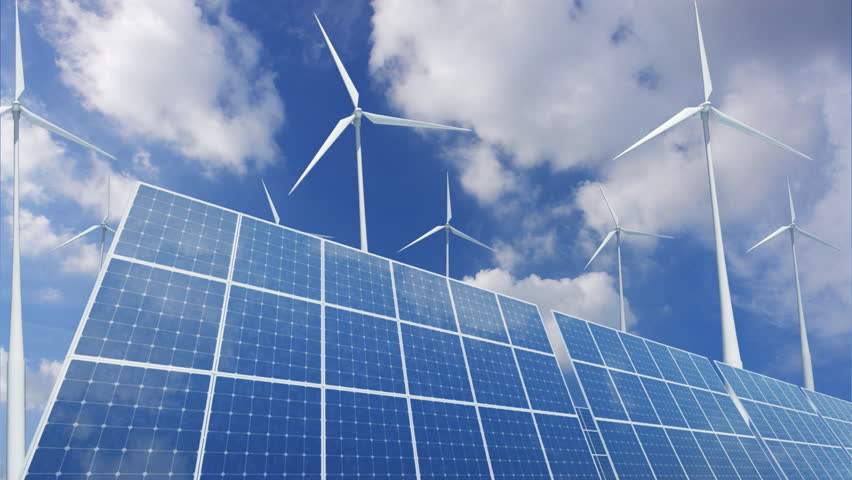Nigeria’s renewable energy potentials are vast. Some plans and policies have been drafted in the past, stating the government’s commitment to developing the country’s renewable energy profile. The first Renewable Energy Master Plan was drafted in 2005. A revised REMP was developed in 2012, but was never approved by the Federal Executive Council. In 2015, the government approved the Nigerian Renewable Energy and Energy Efficiency Policy, NREEEP, which itemizes a number of plans to increasingly harness alternative energies such as solar, wind and biomass. What commitments has the government made in order to incentivize large-scale adoption of renewable energies in Nigeria?
Developed by the Federal Ministry of Power, the NREEEP was approved in April 2015 by the Federal Executive Council for the electricity sector nationwide. The policy commits Nigeria to achieving 20% of its national electricity supplies from renewable energies by 2030. However, as there is no certainty about the total available power on the national grid in any given year, these percentages have limited meaning and sometimes even conflict with each other. Current policies have different goals for renewables: while Vision 20:2020 aimed for 10,000 MW from wind and another 10,000 MW from solar in 2013, the Integrated Infrastructure Masterplan targets 30% renewables for 2023. The most current strategy document by government is the Intended Nationally Determined Contributions (Nigeria’s low carbon development strategy): the INDC suggests that solar PV alone would add 13,000 MW to the power pool by 2030. The NREEEP falls short of this by about half, as it commits Nigeria to generating 6,830 MW of solar power by 2030.
The NREEEP has a power roadmap, a strategic set of actions and lists the reforms needed in the supply (i.e. generation and distribution) and demand (i.e. market) segments of the electricity sector, in order to stimulate the growth of renewables in Nigeria. The NREEEP commits government to take a number of actions, such as establishing Renewable Portfolio Standards (RPS), Power Production Tax Credit (PTC), grants and loans, as well as feed-in and licensing incentives.
Renewable Portfolio Standards (RPS)
The Renewable Portfolio Standards (RPS) define the percentage of energy generated that must come from renewables by a given target year. For 2020, the NREEEP targets 18%, which rises marginally to 20% in 2030.
The 2030 target of 20% translates into more than 23,000 MW with the following breakdown:
6,830 MW from solar
4,600 MW from large hydro
8,170 MW from small hydro
3,200 MW from biomass
291 MW from wind
The NREEEP also recognizes the importance of off-grid power generation from renewables and estimates this to reach 12,500 MW in 2030. This refers to rooftop solar panels, mini grids for communities and other power lines that do not connect to the national grid.
Five classes of renewable energy sources - namely hydropower, biomass, solar, wind, geothermal, wave & tidal energy - are adopted in the energy mix projected by the NREEEP to get Nigeria to 40,000 MW total energy by 2020 (page 36).
Power Production Tax Credit (PTC)
Another critical element of the NREEEP is the Power Production Tax Credit (PTC) for electricity generation companies, which is aimed at incentivising the adoption of renewable energy. Here, the government commits to ensuring that RE becomes more widespread through offering the following tax incentives:
- 5-year tax holidays to manufacturers from date of commencement of manufacturing
- 5-year tax holidays on dividend incomes from investment into renewable energy sources
- There are also incentives for importers to import energy efficient appliances and lighting through exemption from excise duty and sales tax;
- Free (i.e. 0%) customs duty for 2 years on the importation of RE and EE equipment and materials.
Finance, Grants and Loans
The NREEEP commits to providing access to finance lines for renewable energy projects as well as generation, distribution and transmission infrastructure, including for grid extension, and more importantly for off-grid, mini-grid and feed-in systems, all based on renewable energy.
Through the NREEEP, the government also commits to providing assistance in allocating or granting of land for RE projects; as well as providing soft loans and special low interest loans from a Power Sector Development Fund to RE and energy efficiency projects.
Feed-in and Licensing Incentives
Acknowledging uncertainties for the off-take for power generated from renewables given that the current national grid collapses at 5,000 MW, the federal government – in the NREEEP – assures investors and solution providers of a guaranteed market for the off-take of RE power generated (page 24).
In pursuant of the NREEEP, the government has declared a commitment to ensuring that the Nigerian Bulk Electricity Trading Plc (NBET), distribution companies (DisCos) or any other identified off-takers are encouraged to buy the electricity offered to the electricity market from RE sources. However, this will be done at a rate fixed by the NERC (page 24). In addition to this off-take guarantee, the government has committed to a “Simplified licensing procedure” for IPPs selling electricity from renewables to the grid (up to 50 MW).
Attachment/Links:
National Renewable Energy and Energy Efficiency Policy (NREEEP, 2015)




